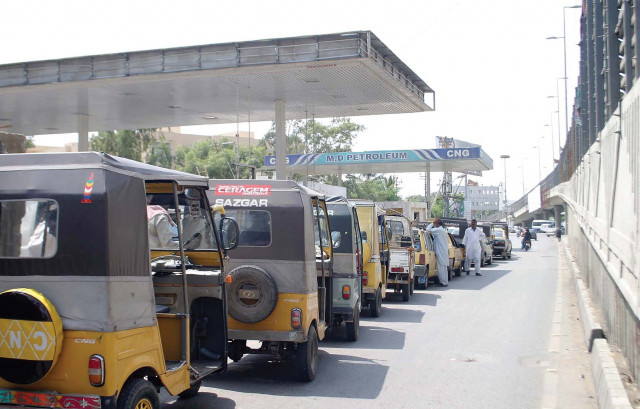Analysis: The ‘Eid gift’ to the upper-middle class hurts the poor
People who benefit most from price cut are more affluent than average household.

Admittedly, this mess started with the federal government and the incoherence of what Islamabad insists is its energy policy. To summarise, the cheapest domestically produced fuel is natural gas, and because its prices have been kept artificially cheap, Pakistan’s reserves as rapidly declining. That means that the country will soon have to begin importing even larger quantities of its energy supply, whether it is liquefied natural gas or crude oil.
At the moment, the government has no real plan to deal with this problem. But talk to any expert in the country, and they will tell you that for the country’s electricity grid, there is only one formula: gas in the short run, coal in the medium term and a heavier reliance on hydroelectricity in the long run. Sounds simple enough, right? It would be, unless you work for the federal government. Then, it gets monumentally complicated.
There are three incredibly powerful lobbies that compete with the power sector for its short-term supply of gas: the CNG lobby, the textile lobby and the fertiliser lobby. And then there is the biggest of them all: domestic consumers, who are actually the biggest users of natural gas, and their lobby is known as every single politician in Pakistan.
The one thing that all of these lobbies have in common is that they all want gas, and they do not want to pay the global market price for it. Domestic consumers pay around $2 per million British thermal units (mmbtu). The fertiliser plants pay between $0.75 and $1.20 per mmbtu. Power producers and CNG stations pay slightly higher, but nowhere near the global prices of liquefied natural gas, which are hovering in the $18 per mmbtu range.
For the past six decades, the government has been able to oblige those demands for low prices, since it owns the biggest companies that drill for the gas, and it owns all three companies that transport the gas in pipelines and sell it to consumers. But this defiance of price gravity is now over: we are out of gas.
Production in Pakistan is expected to peak next year at approximately 4,479 million cubic feet per day, according to an analysis conducted by the petroleum ministry. After that starts the precipitous drop: production will slump 10% in fiscal 2015, and will drop to half of current levels by 2021. We have about 18 months till we jump off this cliff, and we need to conserve supplies to make them last as long as possible. Instead, the Supreme Court just decreed that we hit the accelerator and throttle at full speed off the edge of the energy cliff.
The government had been trying to delay that by raising gas prices. It did so by levying several surcharges. In theory, these surcharges are meant to be diverted towards the cost of improving the domestic gas infrastructure and increasing domestic production, though in practise, the money has mostly gone to the general government pool or revenues and divvied up for other purposes. But, however sloppy the government’s methods, at least they were trying to do the right thing. The Supreme Court, however, appears to feel that “the masses” (by which they mean the upper-middle class) deserve, in the words of the chief justice, the “Eid gift” of lower CNG prices.
Cheaper CNG will mean even more consumption of gas by the upper-middle class. (Let’s be honest and admit that the poor do not own cars that run on CNG and hence have no benefit from this decision at all. Nearly all car-owners in Pakistan belong to the top 20% of households by income.) That means that the country will run out of gas a lot faster than it is currently on track to do.
So how does this hurt the poor? As the country runs out of gas, electricity will be produced using more expensive fuels like oil, which will keep raising the subsidy bill for the government. Electricity subsidies overwhelming benefit affluent households, with up 90% of subsidies being spent on middle class and wealthy consumers. But their cost is paid by the poor, since the government prints money to pay for them, causing a spike in inflation, which disproportionately hurts the bottom 20% of households in the country.
Note that the CNG lobby had absolutely no problem with the decision to lower prices. This is because the court left their margins intact, only asking the government to “review” the formula for those margins at an unspecified future date. The CNG lobby may not be sophisticated economists, but they know that lower prices and stable margins equal more profits for them, as more people line up to use more gas.
There is no way this game ends well. We are already at the point where households in the north of the country do not have enough gas to run their heaters in the winter, or to run power plants in the summer. Engro Corporation’s $1.1 billion fertiliser plant in Sindh is lying idle right now. CNG stations do not get gas seven days a week. And this is when the gas shortage is 1,600 mmcfd. Imagine what will happen in 2015, when that number doubles.
Soon enough, the government will reach a point where it will either have to raise gas and electricity prices across the board for everyone, or else face a subsidy bill so large that it will risk hyperinflation, which would raise the prices of everything anyway. The Supreme Court can try all it wants to lower prices then. But the market is a force of its own: it will refuse to be tamed then.



















COMMENTS
Comments are moderated and generally will be posted if they are on-topic and not abusive.
For more information, please see our Comments FAQ